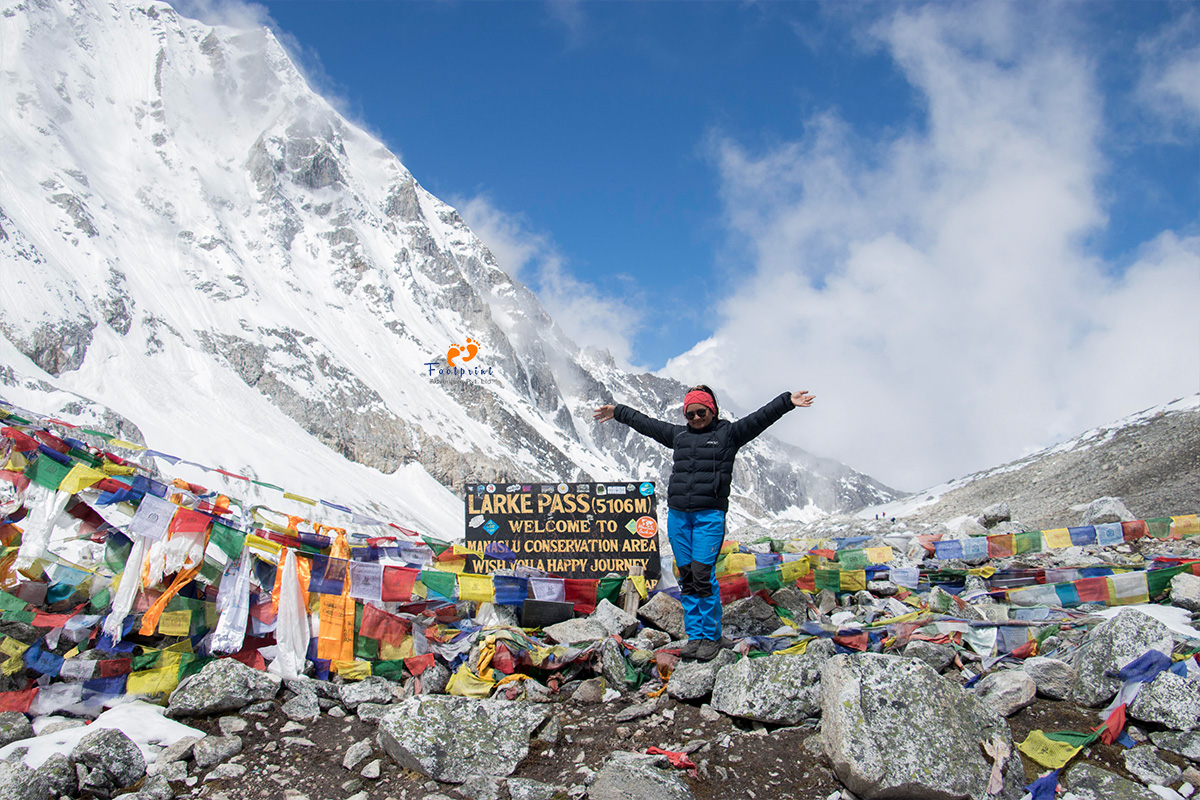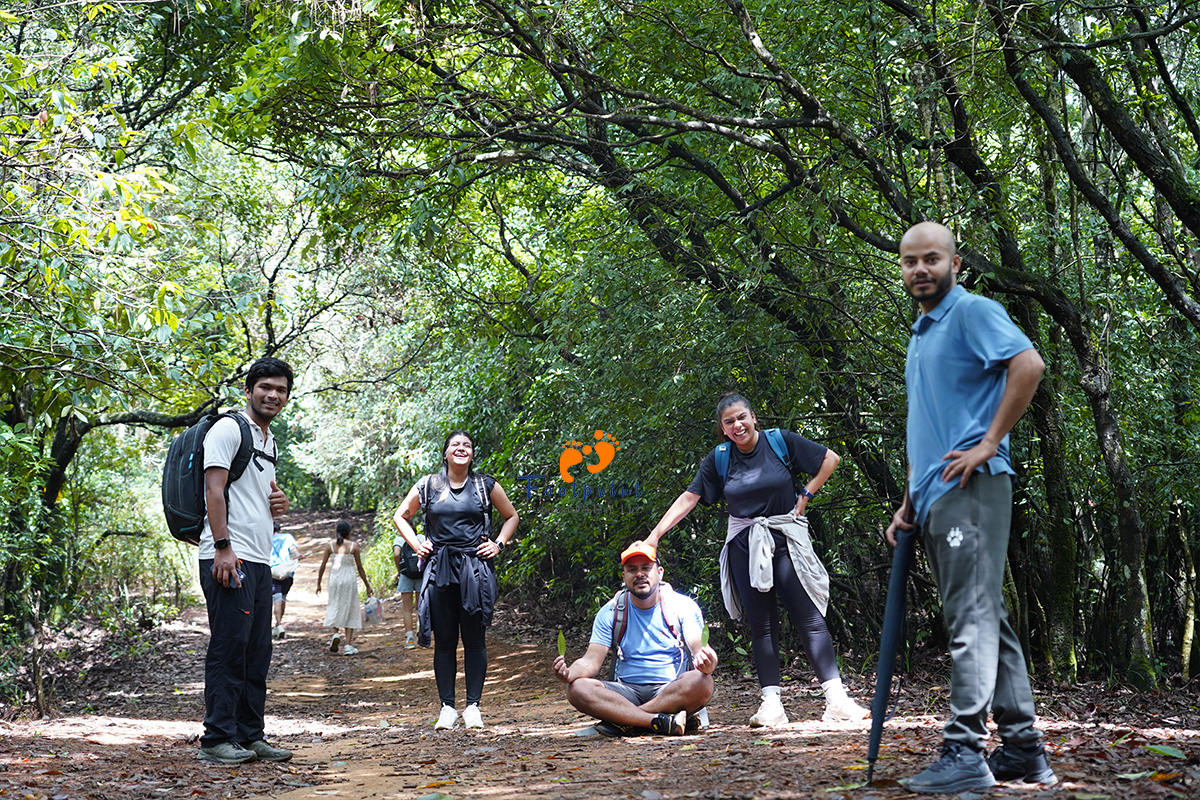Best time to Trek in Nepal
Autumn Season ( Late September - late November)
From mid-September to late November, autumn is widely considered the best season for trekking in Nepal. Trekkers experience clear skies, dry weather, and comfortable temperatures during this period, creating ideal conditions for mountain adventures. Within this window, October is often regarded as the best month for trekking in Nepal, offering the most stable weather and breathtaking views.
Temperatures during autumn vary with altitude but are generally pleasant. In lower elevations, daytime temperatures range from 15°C to 20°C (59°F to 68°F), while nights cool down to around 5°C to 10°C (41°F to 50°F). Higher altitudes see daytime temperatures between 5°C to 15°C (41°F to 59°F), with nights often dropping below freezing.
The season offers several advantages for trekkers. The monsoon rains that precede autumn clear the air of pollution and dust, resulting in exceptional visibility. This clarity provides stunning views of the Himalayan peaks, including iconic mountains like Everest, Annapurna, and Dhaulagiri. The landscape transforms into a vibrant palette of colors, with lush green forests and colorful foliage adorning the hills.
Autumn also coincides with major Nepali festivals like Dashain and Tihar, allowing trekkers to experience local culture and traditions. Popular routes such as the Everest Base Camp trek, Annapurna Circuit, and Langtang Valley trek are at their best during this season, catering to both novice and experienced trekkers.

However, the season's popularity does present some challenges. Trails can become crowded, especially on well-known routes. Prices for accommodations and services tend to be higher, and teahouses fill up quickly, often requiring advance bookings. While weather is generally favorable, mountain conditions can change rapidly, necessitating proper preparation for unexpected weather shifts.
Despite these minor drawbacks, autumn remains the favored season for trekking in Nepal. It offers a perfect blend of clear mountain views, comfortable temperatures, and cultural experiences. Trekkers should plan, book accommodations in advance, and obtain the necessary permits to fully enjoy this peak trekking season in Nepal.

Winter season ( December - January )
Trekking in Nepal in the winter season offers a unique and challenging experience for adventurous travelers. The winter months, typically from December to February, bring colder temperatures and distinct conditions to the Himalayan region.
Temperature in Nepal's trekking areas during winter can vary significantly based on altitude. In lower elevations, daytime temperatures range from 10°C to 15°C (50°F to 59°F), while nights can drop to around freezing. At higher altitudes, temperatures often drop below freezing, reaching -10°C to -20°C (14°F to -4°F) or lower, especially at night.
Trekking in Nepal in winter has several advantages. Clearer skies and breathtaking mountain views are notable pros. The crisp air offers unparalleled visibility, allowing trekkers to witness stunning panoramas of snow-capped peaks. With fewer tourists during this season, trails are less crowded, providing a more serene experience. Additionally, winter offers opportunities to observe unique landscapes and wildlife.
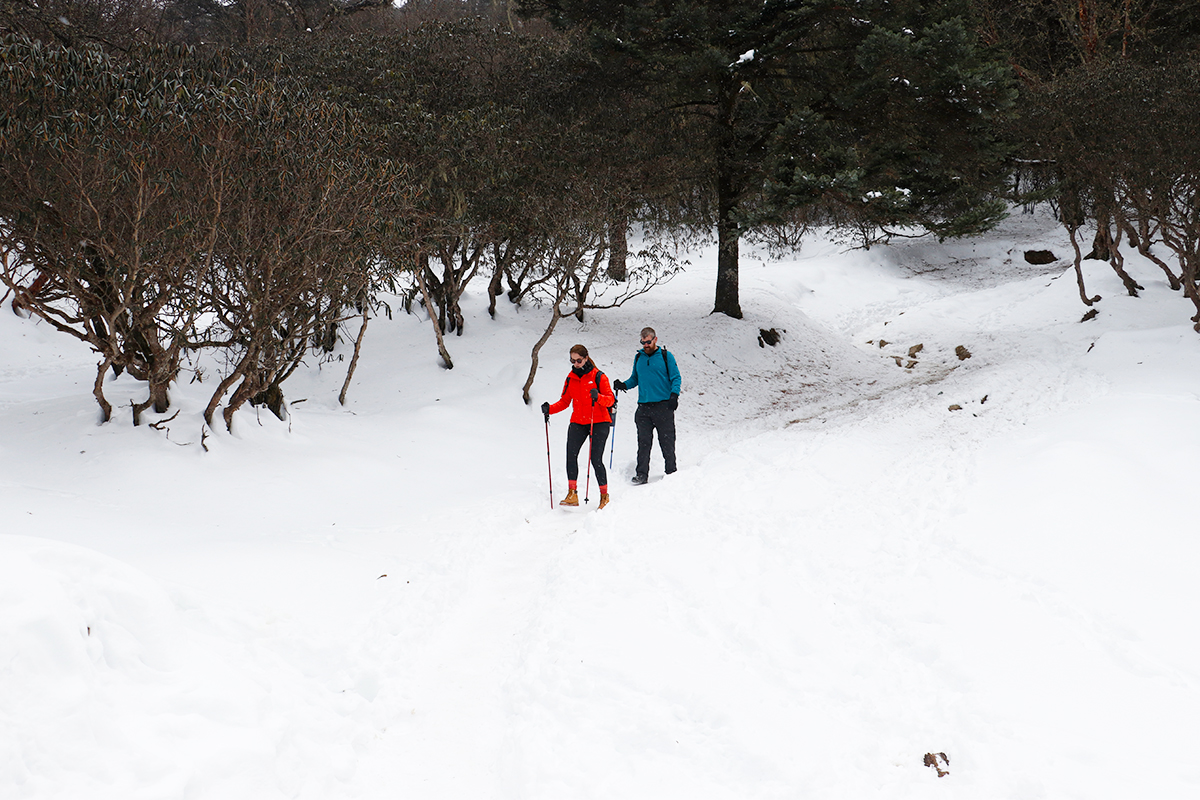
However, winter trekking also presents challenges. The cold temperatures require proper gear and preparation, including high-quality sleeping bags, warm layers, and appropriate footwear. Heavy snowfall can close some high passes, limiting route options. Shorter daylight hours necessitate earlier starts and finishes to each day's journey.
Travelers must also consider the potential for flight delays or cancellations due to weather conditions, which can affect travel plans to and from trekking regions. While teahouses and lodges along popular routes generally remain open, accommodation in some remote areas may be limited during this season.
Spring Season ( February - Mid-April)
Spring, from February to mid-April, marks Nepal's second peak trekking season. Trekkers enjoy warmer weather, longer days, and a vibrant natural landscape.
As winter recedes, temperatures become more pleasant across various altitudes. Lower elevations experience daytime temperatures of 15°C to 20°C, with nights cooling to a comfortable 5°C to 10°C. Higher altitudes, though still chilly, warm up during the day to between 5°C and 15°C, though nights can still dip below freezing.
This trekking season offers numerous advantages. The stable, warm weather creates ideal hiking conditions. In spring, the Himalayan landscape blooms with rhododendrons and wildflowers, covering the hillsides in bright reds, pinks, and purples. The mountains can be seen in stunning ways with clear skies. The milder weather allows trekkers to explore a variety of routes during this season.

Spring also coincides with several local festivals, providing trekkers with unique insights into Nepali culture. The awakening wildlife offers increased opportunities to spot rare mountain animals and birds, adding an element of natural discovery to the journey.
However, the season's popularity presents some challenges. Well-known routes like the Everest Base Camp and Annapurna Circuit can become crowded. This increased foot traffic often leads to busier teahouses, making bookings necessary in certain areas.
As spring progresses into May, the approaching monsoon may bring occasional rain showers and cloudier days. While these usually don't significantly hinder trekking, they can sometimes obscure views of distant peaks.
Monsoon Season ( June - August )
Trekking in Nepal during the pre-monsoon season or summer season, from mid-April to early June, presents a mix of challenges and attractions. As temperatures rise, especially at lower altitudes, daytime highs can reach 25°C to 30°C in lower regions, while higher altitudes remain more comfortable at 15°C to 20°C. The increasing heat can make trekking more demanding, particularly in lower areas.
Despite the rising temperatures, the pre-monsoon season offers some unique benefits. Rhododendrons and other wildflowers continue to bloom, painting the landscape in vibrant colors. Trekkers often enjoy clearer mornings with good mountain views, and the trails are less crowded. However, afternoon clouds and occasional rain showers become more common as the season progresses, signaling the approach of the monsoon in Nepal.
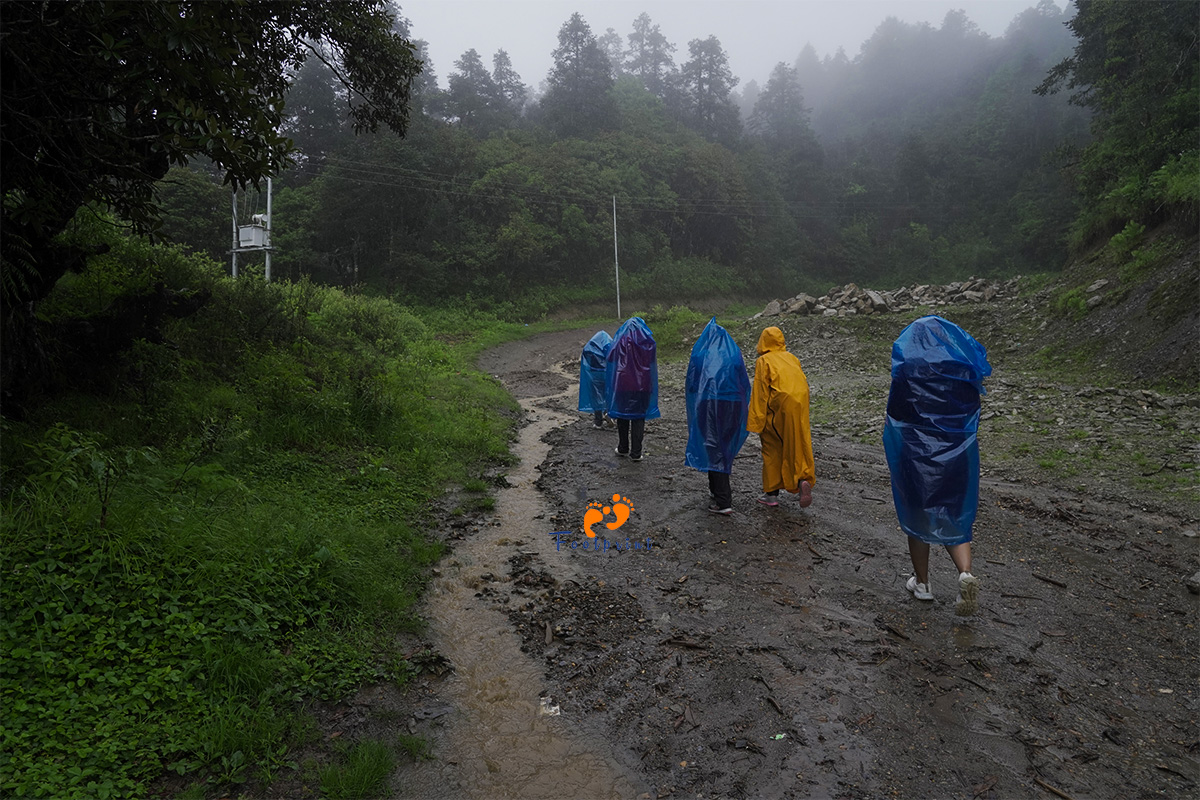
The monsoon season, lasting from mid-June to late August, brings significant changes to the trekking experience. Heavy rainfall becomes frequent, especially in the lower and middle hills. Temperatures remain warm, ranging from 20°C to 25°C in lower areas and 10°C to 15°C at higher altitudes, but humidity increases considerably.
During the monsoon, Nepal's landscapes transform into lush, green panoramas. Flowers bloom in abundance, attracting a variety of butterflies and other wildlife. Trekkers can enjoy fresh fruits and vegetables along the routes. The air feels cleaner after rainfall, and the reduced number of tourists offers a more solitary experience in the mountains.
However, monsoon trekking comes with significant challenges. Frequent and sometimes heavy rainfall can limit mountain views and make trails muddy and slippery. Leeches become active on mid-elevation trails, requiring extra precautions. There's also an increased risk of landslides and road blockages, which can disrupt travel plans. Flight cancellations due to weather are more common during this season.
For both pre-monsoon and monsoon treks, it's advisable to choose higher altitude routes where temperatures are more moderate and leeches are less prevalent. When considering the best trekking in Nepal during monsoon, routes in rain shadow areas, such as Upper Mustang, and Dolpo, and the upper portions of popular treks like Annapurna Circuit and Everest Base Camp, are often recommended. These areas experience less rainfall and offer unique landscapes and cultural experiences even during the wet season.
Conclusion
Nepal offers an incredible trekking experience throughout the year, with each season bringing its unique characteristics. While some months are more popular due to pleasant weather and clear mountain views, adventurous travelers can find enjoyable treks during any time of the year. The key to a successful trek lies in proper planning, understanding the seasonal variations, and being prepared for the specific conditions you might encounter.
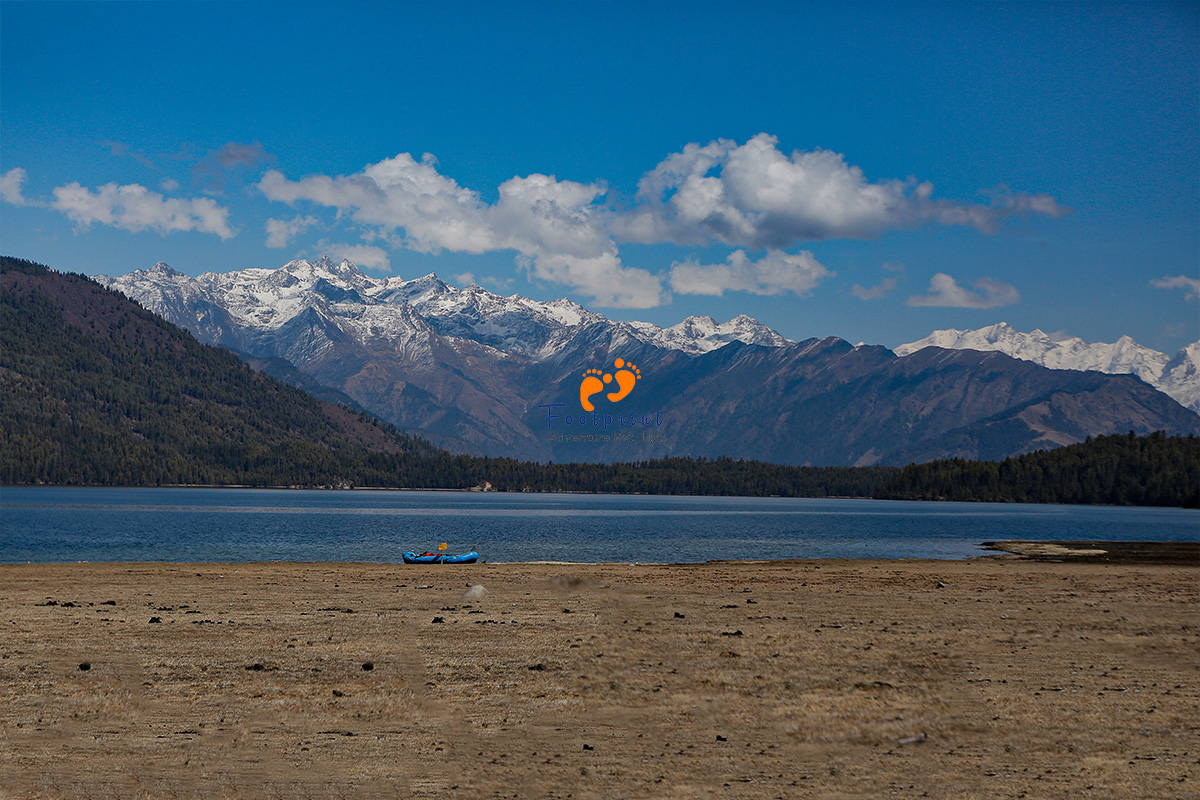
Regardless of when you choose to visit, Nepal's stunning landscapes, rich cultural heritage, and warm hospitality ensure an unforgettable journey. From snow-capped peaks to lush forests, and ancient temples to remote villages, there's something for every type of trekker. By choosing the right route for the season and packing appropriately, you can embark on an amazing adventure that combines natural beauty, physical challenge, and cultural immersion in one of the world's most breathtaking mountain regions.
Frequently asked questions
Which weather is best for trekking in Nepal?
The best weather for trekking in Nepal is typically during autumn (September to November) and spring (March to May). During these seasons, you can enjoy clear skies, moderate temperatures, and stunning views of the Himalayas.
Why is spring (March to May) a good time for trekking in Nepal?
Spring offers mild temperatures and blooming rhododendrons and other wildflowers, adding colors to the landscape. The weather is generally stable, making it another popular season for trekking.
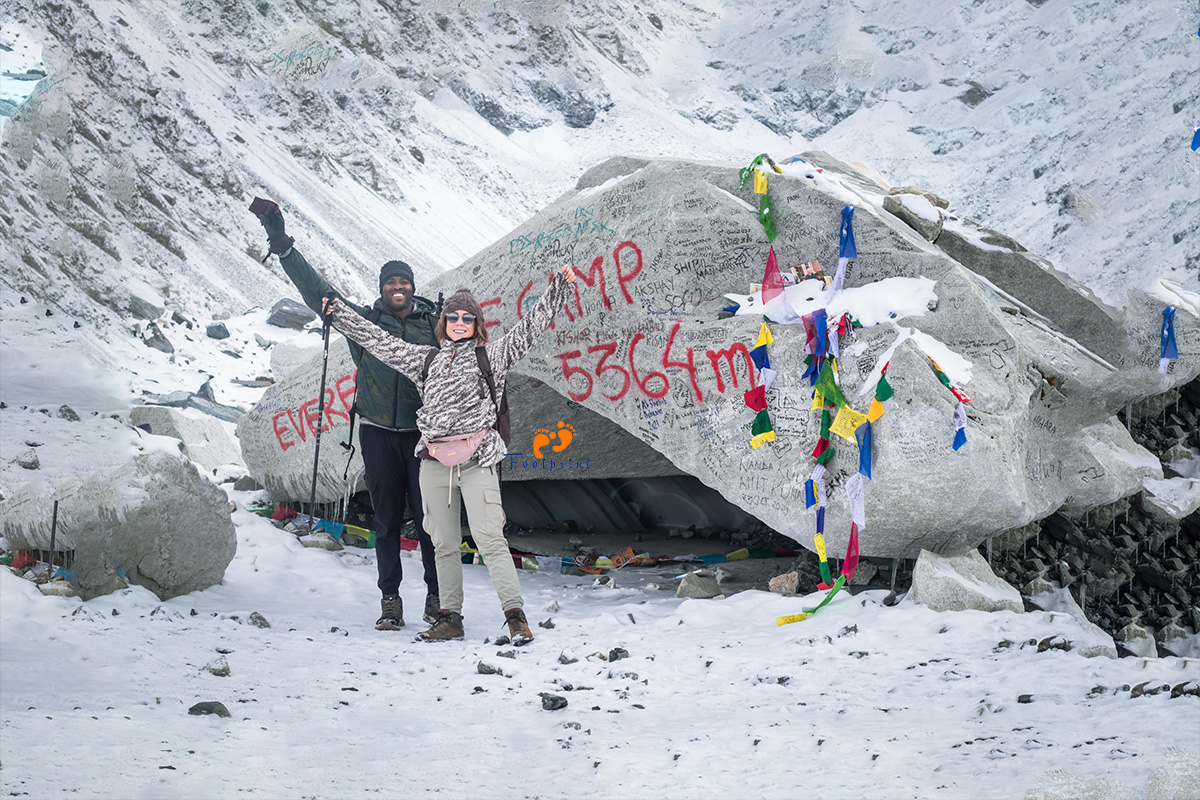
Which is the best trek in Nepal?
The best trek in Nepal depends on personal preferences and trekking experience. Popular choices include the Everest Base Camp trek, Annapurna Circuit, and Langtang Valley trek, each offering unique landscapes, cultural experiences, and challenges.
How crowded are popular trekking routes during peak seasons like autumn and spring?
Routes like Everest Base Camp and Annapurna Circuit can be quite crowded during peak seasons. It's recommended to book accommodations and permits in advance to ensure availability.
What should I do if weather conditions change unexpectedly during a trek?
Stay informed about weather forecasts, carry appropriate gear for various conditions, and be prepared to adjust your itinerary if necessary to ensure safety and enjoyment.
Are there any treks suitable for the monsoon season?
Yes, there are treks suitable for the monsoon season in Nepal. Popular options include the Upper Mustang and Nar Phu Valley treks, which lie in the rain shadow region, receiving less rainfall and offering stunning landscapes and unique cultural experiences.
